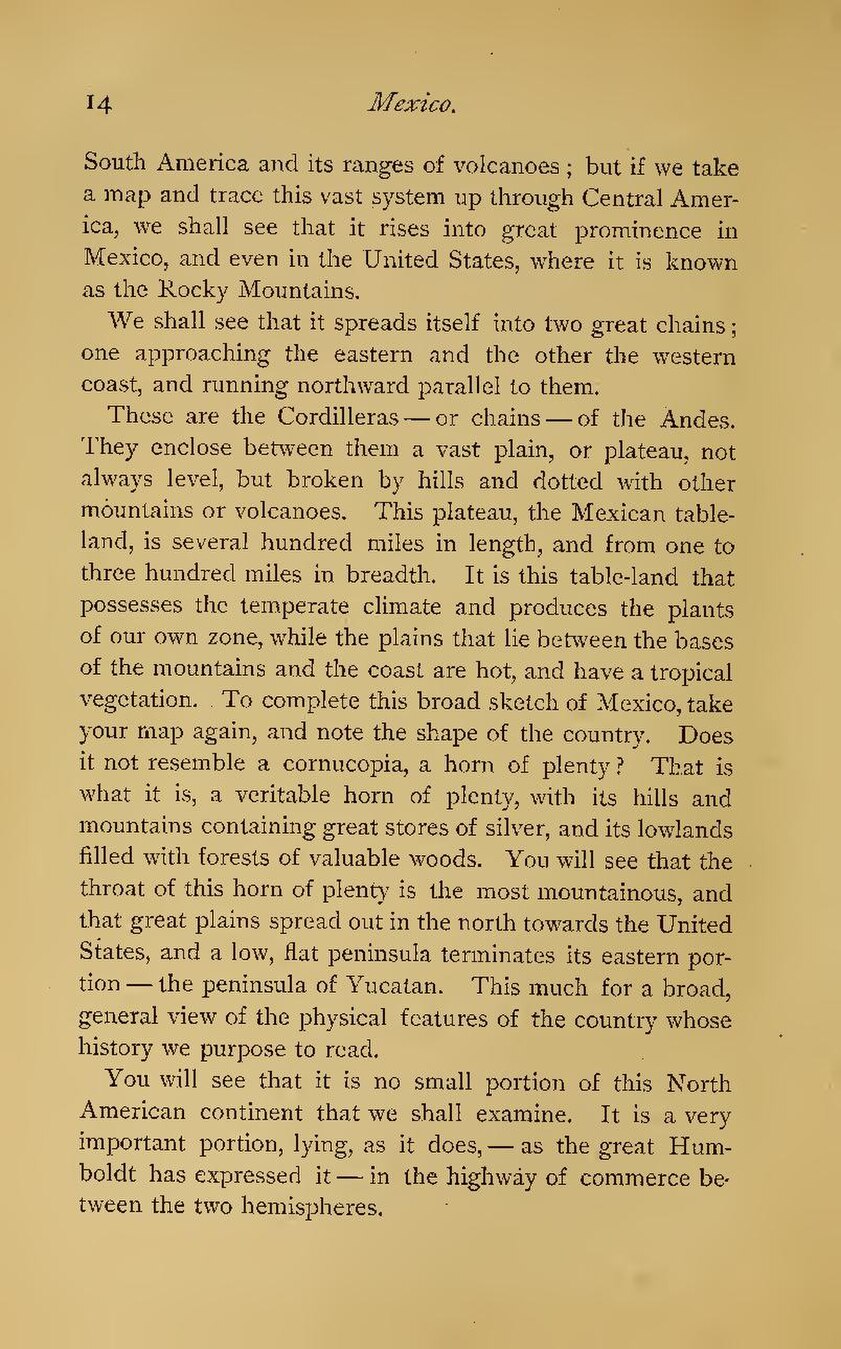South America and its ranges of volcanoes; but if we take a map and trace this vast system up through Central America, we shall see that it rises into great prominence in Mexico, and even in the United States, where it is known as the Rocky Mountains.
We shall see that it spreads itself into two great chains; one approaching the eastern and the other the western coast, and running northward parallel to them.
These are the Cordilleras—or chains—of the Andes. They enclose between them a vast plain, or plateau, not always level, but broken by hills and dotted with other mountains or volcanoes. This plateau, the Mexican tableland, is several hundred miles in length, and from one to three hundred miles in breadth. It is this table-land that possesses the temperate climate and produces the plants of our own zone, while the plains that lie between the bases of the mountains and the coast are hot, and have a tropical vegetation. To complete this broad sketch of Mexico, take your map again, and note the shape of the country. Does it not resemble a cornucopia, a horn of plenty. That is what it is, a veritable horn of plenty, with its hills and mountains containing great stores of silver, and its lowlands filled with forests of valuable woods. You will see that the throat of this horn of plenty is the most mountainous, and that great plains spread out in the north towards the United States, and a low, flat peninsula terminates its eastern portion—the peninsula of Yucatan. This much for a broad, general view of the physical features of the country whose history we purpose to read.
You will see that it is no small portion of this North American continent that we shall examine. It is a very important portion, lying, as it does,—as the great Humboldt has expressed it—in the highway of commerce between the two hemispheres.
